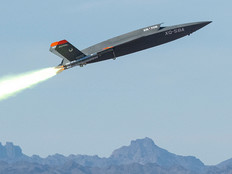Edge Computing Benefits and Challenges for the Pentagon
Since the launch of CSfC, the DOD and the IC have increased remote work. Edge resources help both organizations’ personnel avoid connecting to the public cloud and exposing themselves to potential cyberattacks. However, when a cloud connection is needed, they can use a trusted gateway to move from a classified to unclassified network.
Amazon Web Services announced in February that its Modular Data Center — which will allow the DOD to deploy secure edge computing and storage in remote environments — would be sold under the department’s $9 billion Joint Warfighting Cloud Capability contract.
The Pentagon isn’t limited to using only AWS under that contract; using CSfC, agencies can obtain ruggedized, secure servers for remote outposts.
A challenge the DOD faces in working with any vendor’s solution is it will need to strip some parts or maintain old, classified ones to comply with its own security policies and controls. As a result, the Pentagon’s adoption and vetting of edge computing solutions takes longer than it does for industry.
DISCOVER: Check out 5 ways edge computing can deliver better application performance.
How Civilian Agencies Should Approach the Edge
Civilian agencies have found edge infrastructure more agile to stand up and more mobile in disaster response situations.
National security agencies are taking advantage of data analytics in cameras that can identify objects, people and threats in real time at the edge.
Edge computing also lets low-latency applications run optimally, so federal engineers and data scientists working remotely don’t need to access large applications out of a centralized data center.
Those agencies interested in adopting edge computing should do their research and seek out industry partners that can provide accurate cost estimates. Some vendors offer affordable processes and appliances for compute, storage and networking that will lower edge computing costs.
Agencies also need to identify a problem to solve with edge computing, targeting less critical services for testing edge computing solutions and transitioning methodically. That way, they won’t make the classic mistake of moving too quickly and taking on more than they can handle.
This article is part of FedTech’s CapITal blog series.




_0.jpg)
_0.jpg)

.png)



